Gigantic "Flying Bum" plane takes to the skies
The world's largest aircraft, Airlander 10, has completed its successful maiden voyage over the UK (+ movie).
The 91-metre-long hybrid aircraft – part plane, part airship – took off from Cardington Airfield in Bedfordshire on Wednesday evening.
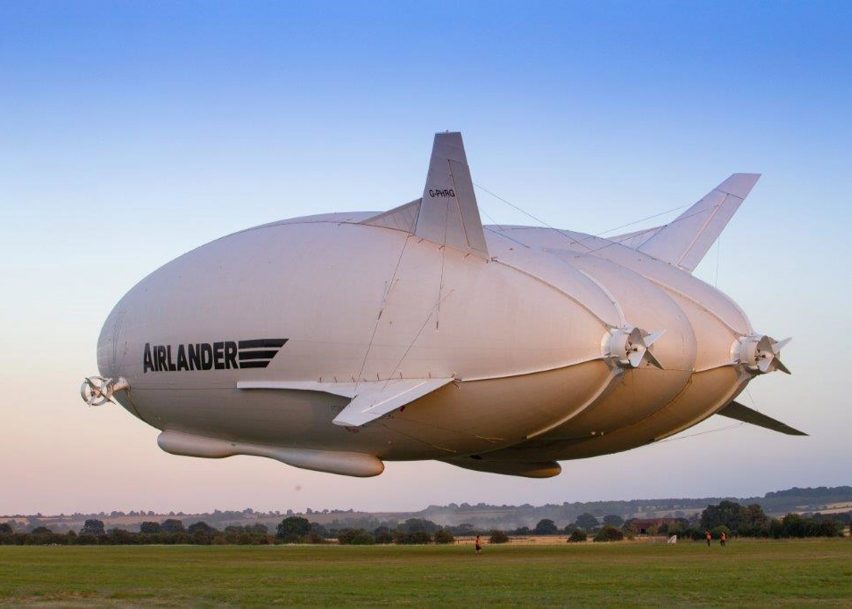
It was the first flight for the "Flying Bum", nicknamed for its bisected, bulbous shape. The aircraft reached speeds of 35 knots (40 miles per hour) during the 19-minute test flight.
In recent weeks, the aircraft had been seen leaving its hangar in preparation for the flight.
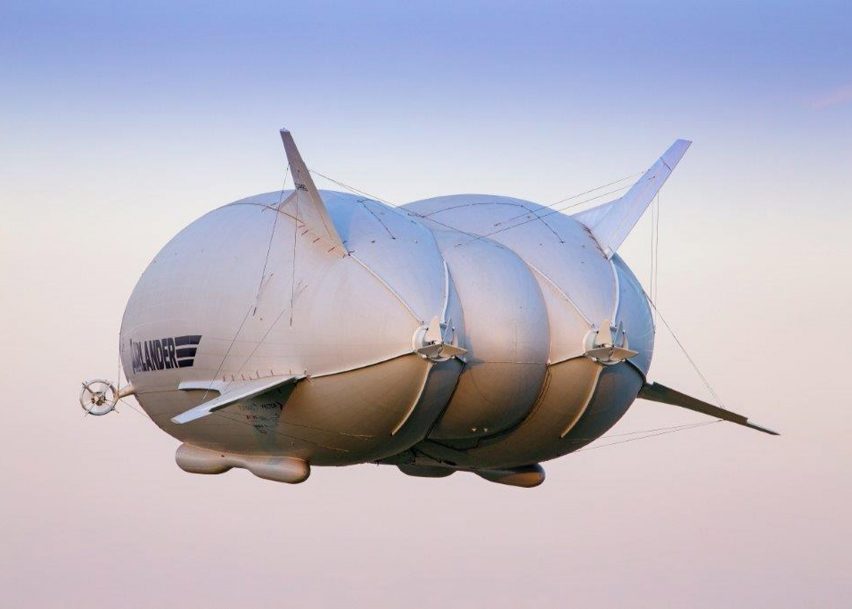
The Airlander 10 is the product of British company Hybrid Air Vehicles (HAV), which claims the vessel could be the future of air travel. It states the vessel is quieter and emits less pollution than traditional aircraft.
HAV began pre-flight testing at 9am yesterday before the technical team gave the all-clear for the journey to commence.
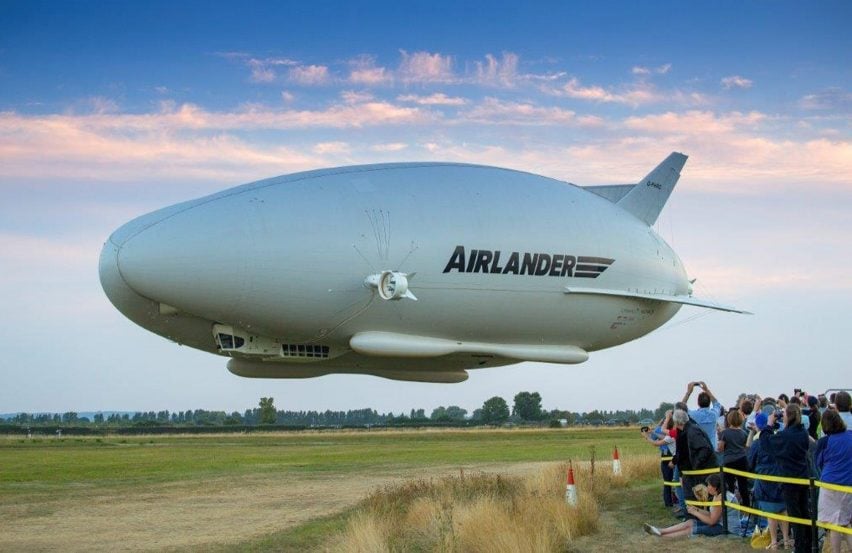
Its four massive engines were started up 30 minutes before take-off. Once airborne, the Airlander 10 flew within a six-mile area around the airfield.
It topped out at a height of 500 feet (152 metres) and reached a maximum speed of 35 knots (40 miles per hour). The aircraft was flown by HAV's chief test pilot Dave Burns, who afterwards said it "flew like a dream".
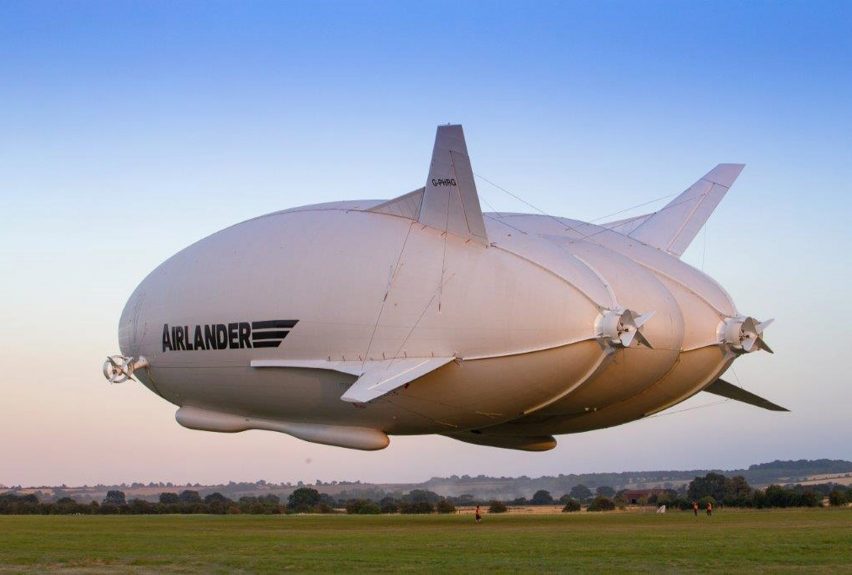
Due to a late take-off time, the Airlander 10 was limited to a 19-minute flight so it could land before it became dark.
The 91-metre-long and 26-metre-high Airlander 10 craft is a hybrid of an airship and an aeroplane. The combination of these systems means it could stay airborne for up to five days.
It was originally developed as part of a US Army project but was abandoned after funding cuts. HAV brought the craft back to the UK and converted it for civilian use.
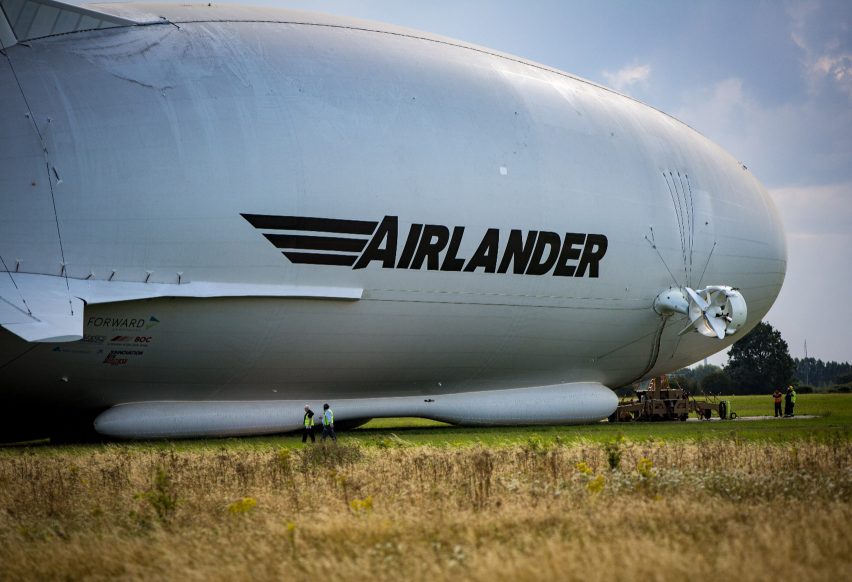
There is no internal structure in the Airlander 10. Its shell – made from a strong liquid crystal polymer called Vectran – maintains its shape due to the pressure of helium inside its hull.
It can stay airborne for long periods because 60 per cent of its lift is produced aerostatically, by virtue of it being lighter than air. This allows it to float like a helium balloon.
The other 40 per cent of its lift is generated aerodynamically, as it is in aeroplanes, using the Airlander's wing-shaped hull.
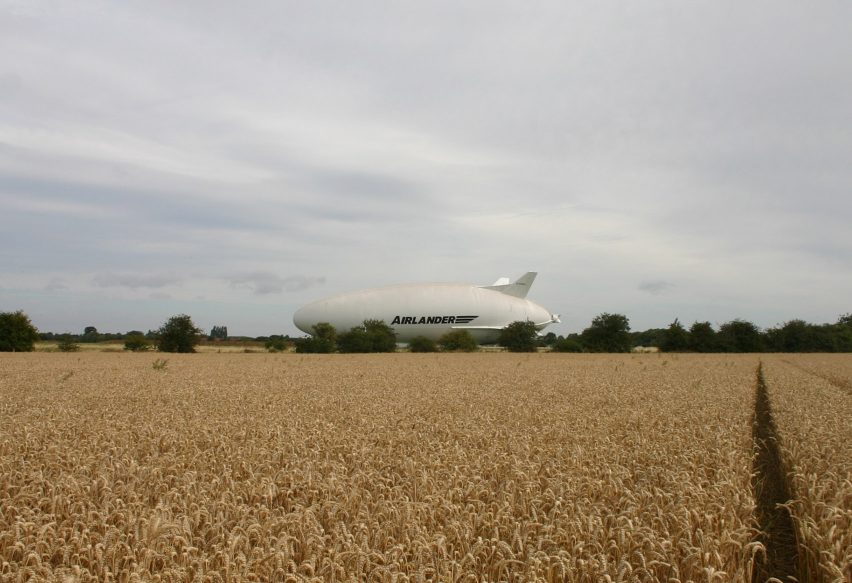
The aircraft's engines rotate to provide additional thrust upwards or downwards, which is how it can land, take off and hover.
Transportation designer Paul Priestman recently shared his alternative vision for the future of air travel with Dezeen. He posited that advances in electric motors could see today's aeroplanes replaced by battery-powered, personal flying machines.
Recent developments in flight include a new luxury line of personal aircraft from Cobalt and the return of Virgin Galactic space flight testing.